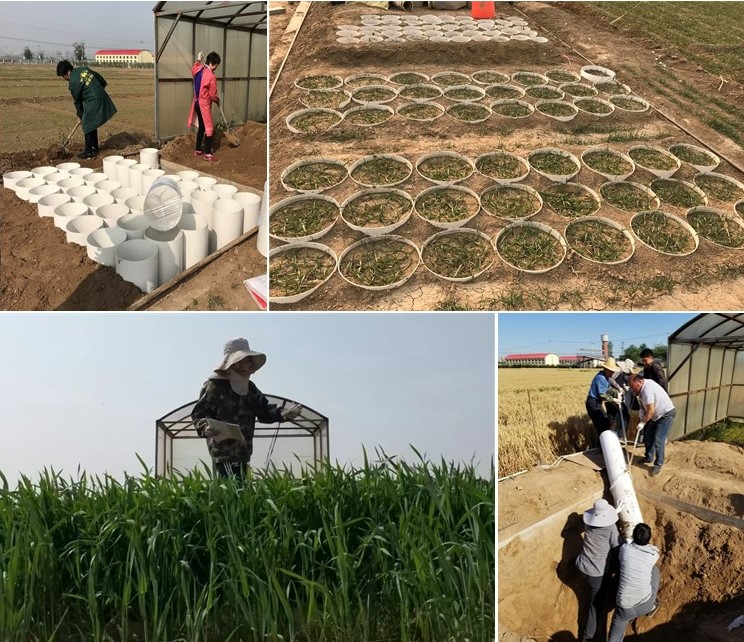中国の旺盛なコムギ消費を支える「深~い根」の役割について、中国科学院と共同で研究した成果が『Agricultural Water Management』にオンライン掲載されました。
背景
華北平原は中国の国内コムギ生産量のうち51%を生産する国内随一のコムギ産地です。平原の広範囲が半乾燥地に分類され、コムギの栽培期間には50~150㎜しか降水量がありません。そこで、華北平原の農家は地下水を灌漑してコムギを生産しています。しかし、国内のコムギ消費量の増加に伴い、コムギ栽培面積が拡大したことで、地下水位の急激な低下という問題が顕在化してきました。これは、食料生産の持続性に大きな脅威であると同時に、深刻な環境問題であることから、水消費量を抑制するコムギ栽培技術の開発が求められています。
研究内容
本研究は、華北平原の西部に位置する農業資源研究センター(石家庄)のコムギ畑で実施されました。深さ0.5、1.0、1.5、2.0mの巨大な容器を埋設して畑土壌を充填し、十分量、半量、不足量の灌漑水を供給して、コムギを栽培しました。そして、土壌蒸発量、土壌含水量、根量、吸水量、収量(単位面積あたりコムギ子実収穫量)などを計測し、灌漑水が不足する条件下でコムギ根が如何に土壌水を獲得して子実(コムギ粉原料)生産に活かしているかを解析しました。その結果、「コムギ根は深さ2mに到達すること」、「深い根を発達させれば僅かな土壌水を効率的に獲得できること」、「深い根を発達させれば子実生産を左右する生育終盤に効率よく土壌水を獲得できること」、「深い根を発達させるコストに対して収量のベネフィット(利益)が相対的に大きくなること」、などが明らかになりました。
今後の展望
本研究は、コムギに「深~い根」を発達させることが華北平原の水問題に対する解決策の一つであることを示しました。この知見を活かし、根を深く発達させる栽培技術の開発や、根を深く発達させる新品種の育成が期待されます。現在、三重大学と中国科学院の研究グループは、根を深く発達させる栽培技術の開発に取り組んでおり、その成果が待たれます。
The North China Plain (NCP) is one of the most important regions for wheat supply in China. In the NCP where evaporation exceeds precipitation, wheat plants are produced with groundwater to meet plant water requirement. The long-term water pumping, however, has reduced the groundwater level significantly, giving serious threats to environmental quality and agricultural sustainability in the region. Therefore, the development of water-saving technologies is acutely needed for wheat supply in China.
A group of scientists from Mie University and the Chinese Academy of Science conducted a field trial in the NCP to tackle with this serious issue. In the trial, plants were grown with a varied level of irrigation, and rooting depths were controlled by a special structure buried in the field. The scientists then revealed that wheat plants can develop extremely large roots that are deeper than 2m, if wheat plants develop deep roots, they can acquire soil water efficiently during later growth stages when grain (source of wheat flour) yield is determined, and so on.
Their findings are expected to contribute to the development of water-saving technologies such as new cultivation techniques that induce the development of deeper roots in wheat plants and new wheat cultivars inherited with a deep rooting capacity. The study was published in a world-renowned journal, Agricultural Water Management, on May 16, 2022.

Comments are closed